Urban Green: beauty and healthiness
Green is the best solution for the livability of cities.
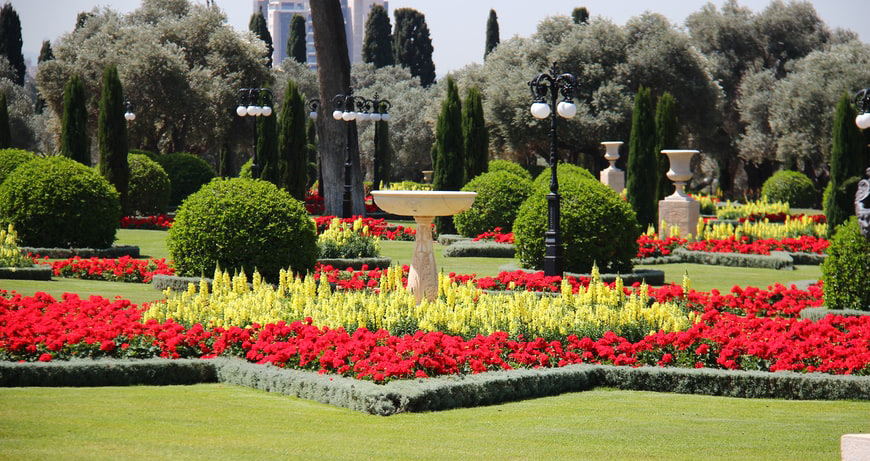
The cities in which we live today are the result of an evolution, of many urban overlaps, of new agglomerations and of the passage of many historical periods: from Roman to medieval, from Renaissance to Baroque, from neoclassical to modern.
The historical event that certainly influenced the evolution of the city and the surrounding area was the Industrial Revolution which, by generating a phenomenon of overcrowding, created various urban problems. Due to the enormous migratory influx to cities, and the consequent demographic increase, in fact, a large number of houses have been built in spaces that are not always adequate, causing the creation of unhealthy neighborhoods and limiting the areas intended for urban green.
<< The city is a work tool. Cities today no longer commonly perform this function. They are inefficient: they wear out the body, they mortify the spirit. The disorder that reigns more and more is irritating: the state of decadence in which they find themselves wounds our self-love and hurts our dignity. Cities are no longer worthy of their time: they are no longer worthy of us >>
Le Corbusier
The relationship between the city and the countryside, which had been balanced for centuries, after industrialization was broken in favor of the city, increasingly marking the "divorce" between man and his environment.

In a way that is completely parallel to the evolution of the city, the concept of urban green has also undergone significant changes over the years, following the needs of the community.
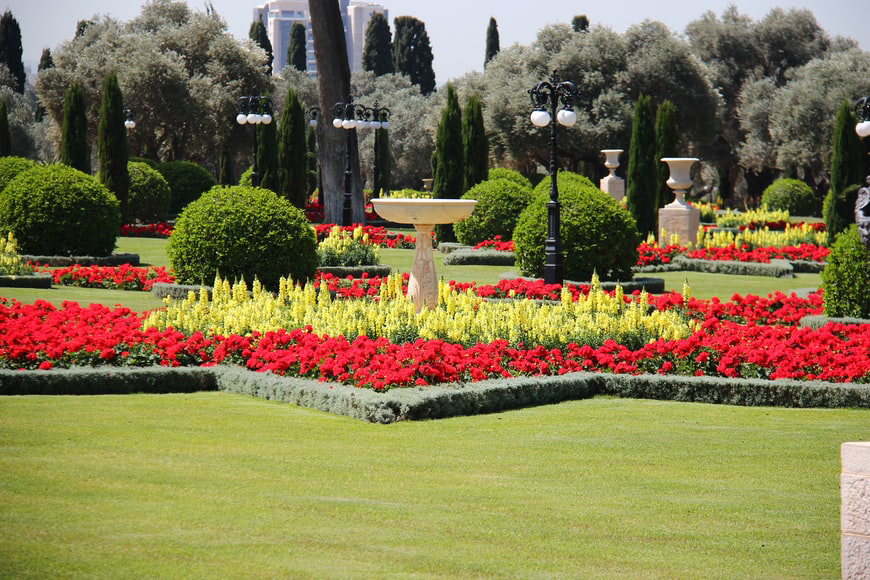 In the past, the limited presence of vegetation inside the cities, with the exception of the vegetable gardens behind the houses, was due to the close link that the urban centers had with the surrounding countryside and territory. The duties reserved to it were exclusively those of hunting ground near the castles, villas and noble possessions, and those of "ornament" within them as a garden, which had to comply with strict geometric and compositional rules.
In the past, the limited presence of vegetation inside the cities, with the exception of the vegetable gardens behind the houses, was due to the close link that the urban centers had with the surrounding countryside and territory. The duties reserved to it were exclusively those of hunting ground near the castles, villas and noble possessions, and those of "ornament" within them as a garden, which had to comply with strict geometric and compositional rules.
Over the years, around the seventeenth century, the garden extends beyond the enclosing walls of the private property, thus "invading" the city and transforming itself into a real park.
Unlike the garden, its plan no longer derives from rigid and schematic rules of composition for aesthetic and formal purposes only, but shows more natural settings with accurate details of the plants, flowers, monuments and furnishings.
The urban greenery begins to be distributed, albeit in a very limited way, also in other parts of the city in the form of trees, shrubs and ground cover structures that were integrated into the streets and squares, in order to create a pleasant landscape.
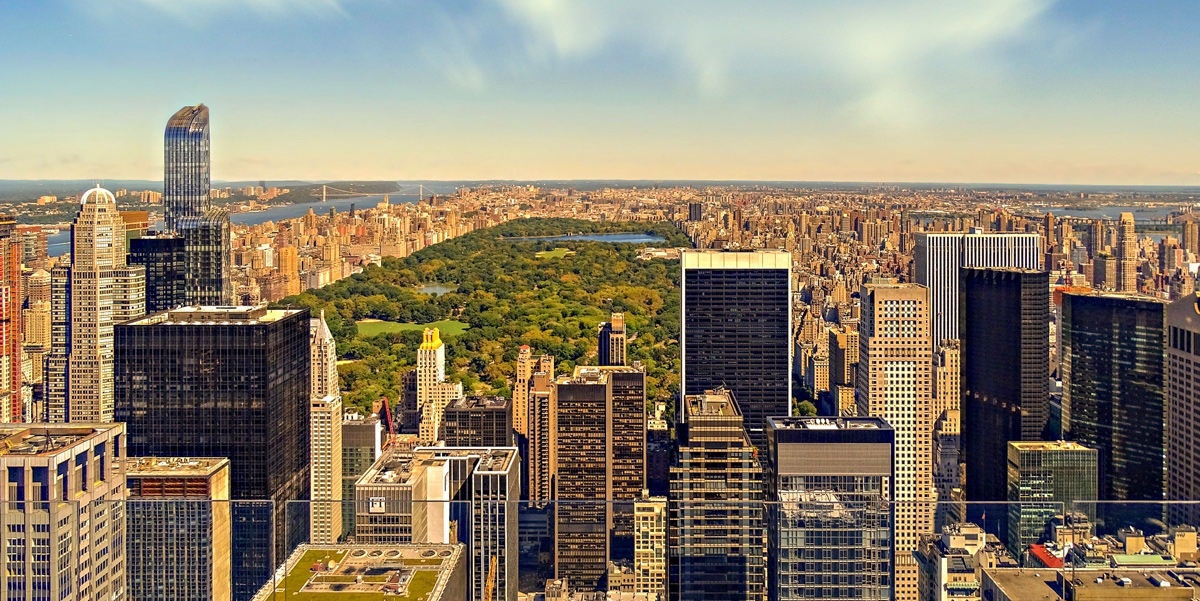
Between the end of the eighteenth century and the beginning of the nineteenth century, a culture of greenery known as landscape architecture spread in America. Among the various protagonists of this culture Frederick Law Olmsted proposed (while participating in the competition for the design of Central Park) to bring "the nature of the countryside" back to the city by introducing agriculture and specific forestry.
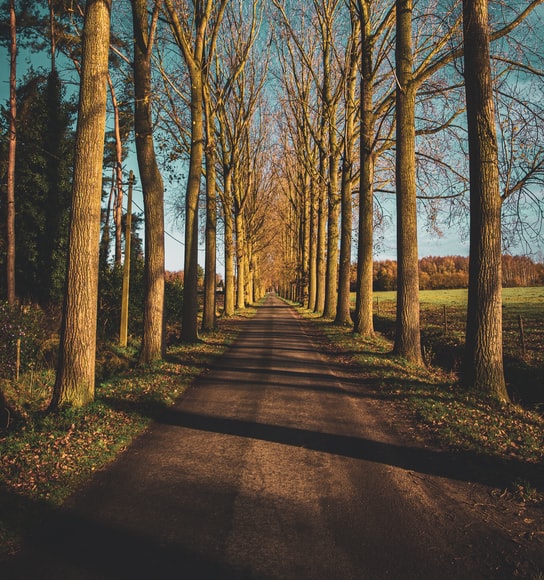 It is therefore possible to understand how Olmsted does not refer to an isolated structure, placed in any part of the city, but rather, is involved in extending the park into the urban fabric thanks to the construction of parkways, or large connecting arteries that characterize the commercial street, the light vehicular one, and the pedestrian one.
It is therefore possible to understand how Olmsted does not refer to an isolated structure, placed in any part of the city, but rather, is involved in extending the park into the urban fabric thanks to the construction of parkways, or large connecting arteries that characterize the commercial street, the light vehicular one, and the pedestrian one.
In the nineteenth century the parks definitively established themselves as meeting places for free time and, in addition to allowing the usual walking function, they were equipped to allow sports, leisure and recreation activities. They became synonymous with urban quality and indispensable equipment, to be integrated into town planning, for the construction of the modern city.
The city, today, is the result of the expansion of the old urban center, outside the old walls. Considering that the landscape is the appearance of a place, it follows that, with the transformations of the earth's surface that have taken place in the last millennia, mainly by man, even the landscapes have radically transformed: from natural landscapes we have always passed more to artificial landscapes.
<< We can sense that the landscape is important for our well-being: we look for places whose sight gives a sense of harmony, liveliness or singularity (and what is harmonious is not hostile, what is lively is cheerful, what is it is singular foreshadows new and therefore interesting things; instead we flee places whose sight gives a sense of disorder, flatness, predictability.
A balanced and orderly landscape produces calm, psychic security and aesthetic enjoyment; a disordered landscape or with elements of casual dissonance produces discomfort. >>
Roberto Barocchi
Urban greenery is the best solution because, if used well, it can solve our double problem of beauty and health within the city.
What benefits can be drawn from urban green in cities?
Urban greenery offers citizens various functions, the main ones being listed below.
- Ecological-environmental function
- Health function
Recent sociological investigations have recognized that green has great psychological importance on individuals, demonstrating that the physical environment in which one lives influences their behavior. Contact with nature, in fact, acts on the human mental condition by carrying out a soothing and relaxing action on subjects stressed by the frenetic rhythms of today's cities.
Moreover, the green carries out therapeutic actions towards people suffering from psychic pathologies and in the recovery of drug addicts. It has been shown that the insertion of vegetation inside the hospital structures makes the hospital stay more bearable for patients, resulting in shorter hospitalization times.
- Social-recreational function
- Cultural and didactic function
- Aesthetic-architectural function
<< Inserting trees in a city means the presence of all this in the life of each of us: perceiving the passing of time and seasons through the trees; see not only the colors of the built city that fade in the sun and the walls of the built city that wear out over time, but also colors that renew and transform themselves tirelessly and organisms that time does not consume and instead continues to grow and develop >>
Franca Stagi
With the integration of nature within the city, we will certainly offer the citizen a much more pleasing landscape to the eyes, so it is important to focus on the choice of vegetation.
Various initiatives, in recent years, have tried to enhance the city trees, emphasizing their educational, landscape and cultural aspects.
What are the main elements of green furniture?
The tree
Undisputed protagonist, it must be considered as an essential "architectural element" in the design of the city as, from an architectural and engineering point of view, it can provide privacy, enhance views, hide unpleasant visions and / or enhance particular characteristics of the landscape, enhance architectural lines of buildings and mitigate their hardness.
The tree therefore becomes a distinctive element, a point of reference and sometimes constitutes a connecting element between the past and the present. It can be placed inside parks, gardens, woods or in rows along the roads (tree-lined avenues) and on squares, always taking into account that the space (air and underground) must be sufficient to ensure natural growth.
In choosing the species, criteria such as aesthetic, pathological, climatic, chromatic and functional criteria must be considered, for example, if the air is particularly polluted, deciduous trees will be chosen, which fall into the category of evergreens.
Speaking of trees in the city, we cannot fail to mention the famous tree-lined avenues (or boulevards introduced by Napoleon III and Baron Haussman in France often defined as "living architecture." Depending on the position of the trees that make up the boulevards, plays of light are created In the southern cities, the benches are mainly found in the shaded part of the boulevard, in the northern ones the opposite is true.
The "road" tree is in more difficult conditions, but it appears to be the only possibility of greenery in densely built up areas.
The annual blooms.
The use of the flower bed requires a long practice, an adequate knowledge of the species, and an innate aesthetic taste. To design it, you need to consider basic requirements such as: size of the flower bed, height of the plants (creating dynamism by combining tall plants with low plants), colors of the chosen species.
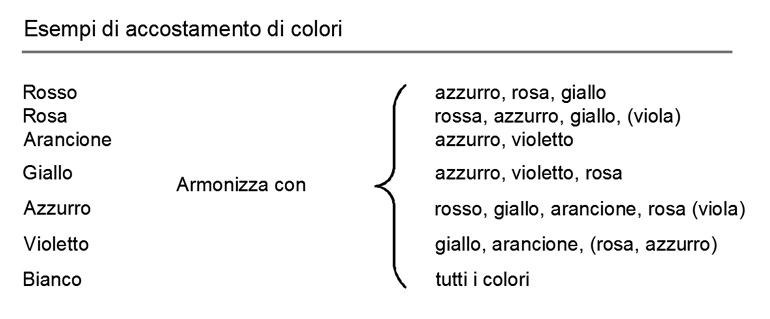
The landscape architect must know how to create harmony through the right choice of colors.
For median flower beds, on the other hand, factors such as turbulence and the concentration of polluting gases must be considered, especially at traffic light intersections, therefore preferring more resistant shrub species.
Grass carpets.
They are the fundamental element for gardens and can have different shapes, sizes and extensions and allows us to obtain more shades, with light and dark colors.
The shrubs, bushes and hedges.
The shrub is a lignified vegetable in all its parts, with branches inserted from the base into a main axis of development limited in height.
The bush, on the other hand, is a shrub but is distinguished by its more "ruffled" shape.
The hedge, on the other hand, is a close succession of shrubs, used to define a space or constitute a barrier.
Thanks to the color of the blooms, leaves, fruits or stems, an excellent aesthetic-decorative function is achieved.
How to divide the urban green within the cities?
Urban greenery, understood in this way, must therefore be well designed. The layout of the greenery inside and outside the city center should be carried out uniformly, thus avoiding privileging and distinguishing some areas over others.
It will therefore be necessary to enhance the historic urban green, thinking for example of all the historic gardens that have come down to us, which are unquestionably "documents" of fundamental importance.
Urban parks were created with the aim of allowing citizens to spend time outdoors and in contact with nature but, at the same time, they are of great help in the fight against atmospheric pollution (vegetation, in fact, absorbs part of the pollutants and emit thus improving air quality) and reduce the unwanted effects of noise pollution. They require very careful planning and are often divided into functional areas: for rest, sport, culture.
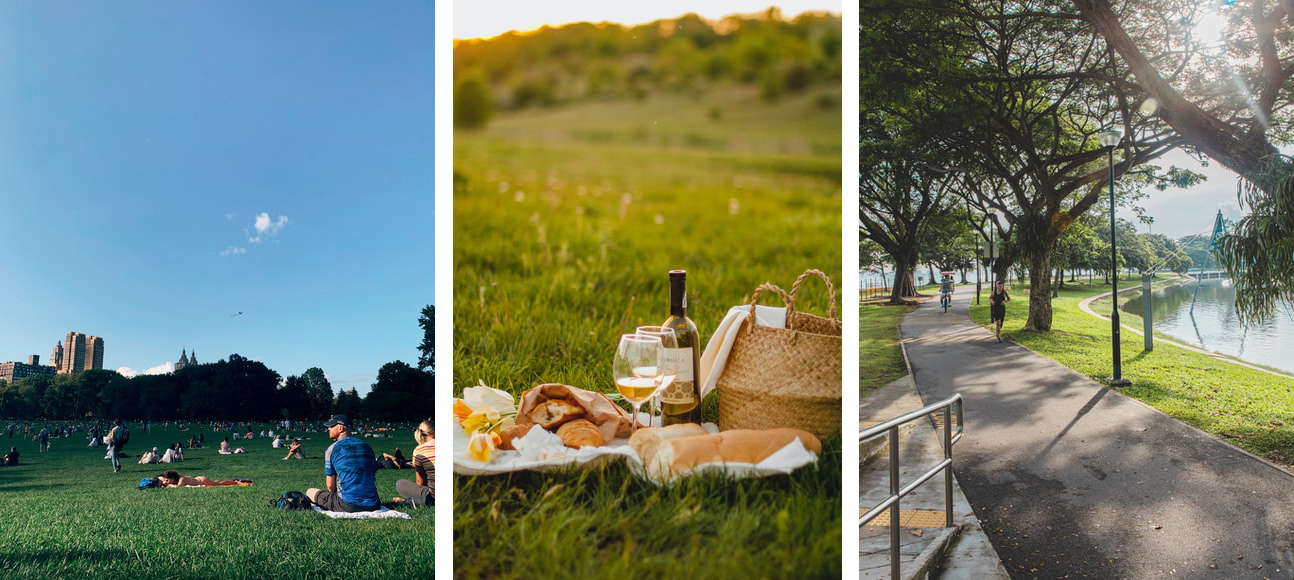
The Archaeological Parks, established in Italy since the 1960s, instead make it possible to protect areas of archaeological interest by creating real open-air museums.
The quantity of health green is also increasing: this type of green has therapeutic purposes for which, in addition to being present in hospitals, it allows the development of bioenergetic gardens. They are based on a technique known as "Bioenergetic Landscapes", which, through particular measurements, recognizes that plants and in particular trees have the ability to electromagnetically influence man and his vital functions, creating therapeutic green areas. In this way, rather large bio-energetic areas are generated, extended up to 20-30 meters away from the plants and large about the same size, particularly suitable for parking, where an electromagnetic quality favorable to our organism can be measured in relation to the type of plant we used and its specific biological influence properties.
Green is a fundamental element of the school educational path: every educational institution, from kindergarten to university, should be equipped with parks and equipment located in the internal courtyards of the school, to offer students places of study, recreation, of socialization.
And finally the cemetery green, based on the English cemeteries, even the cemeteries, already existing, can be enriched with greenery, to convey a feeling of serenity and make a generally sad environment more pleasant.
In conclusion, man needs the presence of urban greenery to take his eyes off the "built city" and dwell on the "living city", to carve out moments of tranquility and peace away from the hustle and bustle. Unlike what one might think, man and nature are two indivisible elements, as the first is a fundamental part of the second.
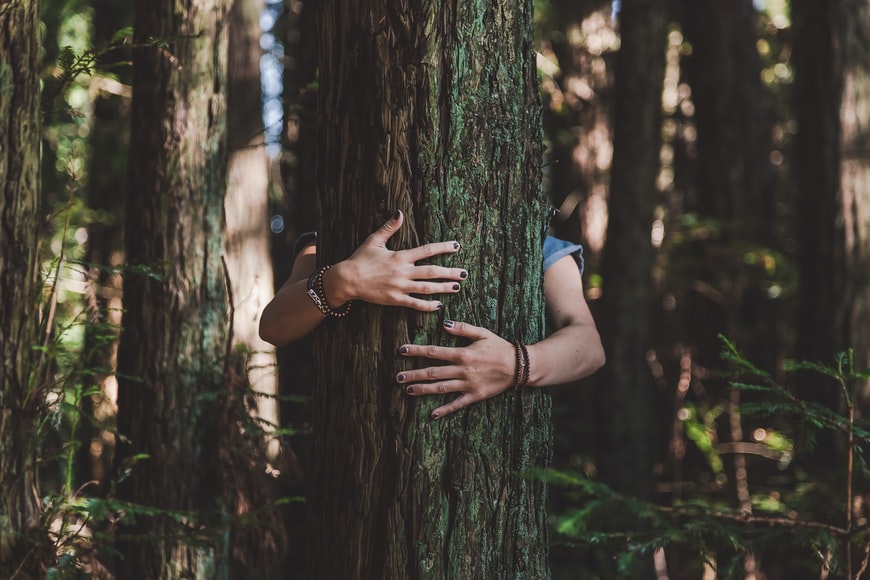
<< … the tree is this thing that is so dear to us all because we too are basically beings of nature; and the urban phenomenon, completely forgetting nature, would be going against the fundamental laws of life […]. In reality, the tree represents an image capable of lifting our spirits, and in the city it is like a caress, a touching gentle note, in the midst of our impressive and severe works. >>
Le Corbusier
Bibliographical references
Spina Maurizio (2008), “Greenways. Dalla tecnica alla prassi urbanistica. Esperienze di progettazione per la città di Catania e il territorio etneo”.
Spina Maurizio (2002), “Il ruolo del verde nell’estetica”, in Moraci Francesca, a cura di “Riflessioni sull’urbanistica moderna”, Roma.
Odone Paolo (1992), “Il verde urbano”, Roma.
Laugier Marc-Antoine (1987), “Saggio sull’architettura”
Le Corbusier traduzione italiana a cura di Annamaria Feltrami Raini(1967),” Urbanistica,” Milano.
Milone Lucia (2003), “Il verde urbano. Tra natura, arte, storia, tecnologia e architettura”.



































































